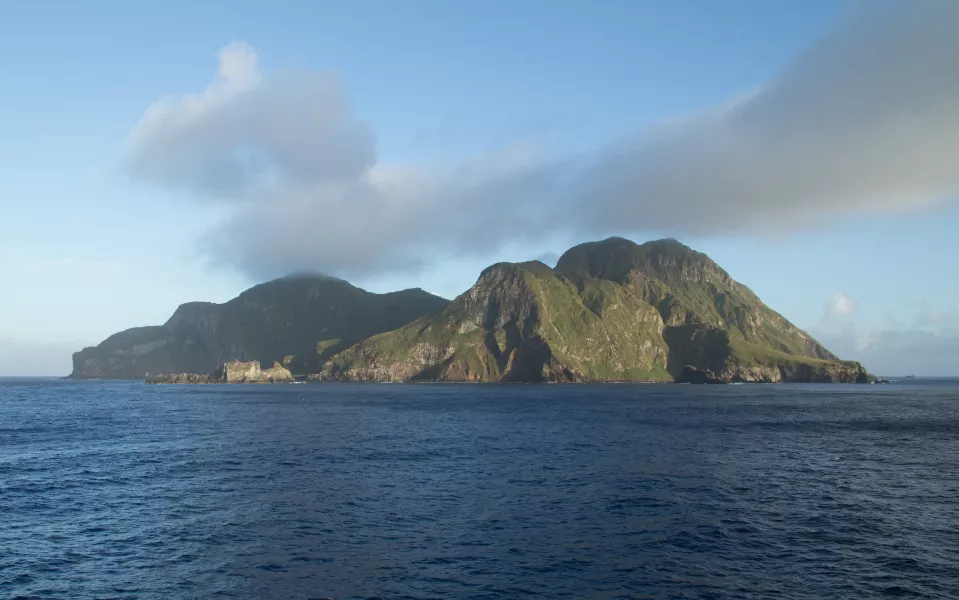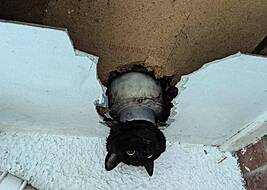
The most remote inhabited land mass in the world – 2,800 kilometres and a six-day boat ride from South Africa – this semi-polar archipelago houses 245 people, 200,000 penguins, 300,000 fur seals, and more than five million shearwaters.
A British Overseas territory, administratively Tristan da Cunha is grouped with the almost-as-remote Ascension Island and St Helena – the South Atlantic atoll to which Napoleon was exiled after the Battle of Waterloo. Tristan’s only town is named Edinburgh of the Seven Seas, and houses the administrator’s office and an hard-working post office.
Tourism is possible, but the government website warns there are “no hotels, no airport, no holiday reps, no nightclubs, no restaurants, no jet skis and no safe sea swimming.” The second largest outer islet is named ‘Inaccessible Island’. We think that rather sums it up.

The resting place of legendary Antarctic explorer Ernest Shackleton, and still a regular stop for cruise ships en route to Antarctica, South Georgia is mountainous, inhospitable, and a beacon of biodiversity. Sixty-five million breeding birds call the island home, including three species of albatross and the world’s southernmost songbird – the endemic South Georgia pipit.
Ensconced in the southernmost reaches of the South Atlantic, the island technically has no permanent residents, but a minimum complement of four scientists have maintained a year-round presence for decades.
Claimed for the British by Captain Cook in 1775, South Georgia made headlines in 2018 for implementing the world’s largest rodent eradication programme – miraculously eradicating an invasive rat population that had terrorised the ecosystem for centuries.
This may be four tiny dots in an enormous ocean of blue, but reaching them is a big deal; getting to the Pitcairn Islands involves flying to Tahiti in French Polynesia, boarding another flight to Mangareva in the Gambier Islands, catching a ferry to the tiny island village of Rikitea, and then enduring a 32-hour ocean crossing to Pitcairn.
The story of Pitcairn is fittingly dramatic – it was settled in 1789 by the Bounty mutineers after they famously overthrew Royal Navy captain William Bligh. Unfortunately, it’s also a case study for the perils of small, isolated societies. In 2004 seven inhabitants including the mayor were charged with sex offences – particularly traumatic for a community numbering only 43.
Volcanic islets with a sub-tropical climate, surrounded by teeming corals, the islands are both a marine reserve and a dark sky sanctuary – so there’s exemplary stargazing by night and exemplary scuba diving by day.

Thanks to the iconic Moai Statues – a UNESCO World Heritage Site and common screensaver – Easter Island punches so far above its weight culturally that it’s easy to forget it’s in the absolute middle of nowhere. Slap bang in the centre of the South Pacific, the nearest inhabited land is actually Pitcairn over 2,000 kilometres away, while it’s 3,686 kilometres to the continental coast of Chile.
The island hosts more than 1,000 stone-carved statues, the work of the indigenous Rapa Nui people, which have ensured a steady stream of tourists since the airport opened in 1967. A predictable combination of foreign diseases, slave raids, and agricultural disruption reduced the population to a low of 111 in 1888, but today residents number more than 7,000, almost half of whom can claim Rapa Nui ancestry.







